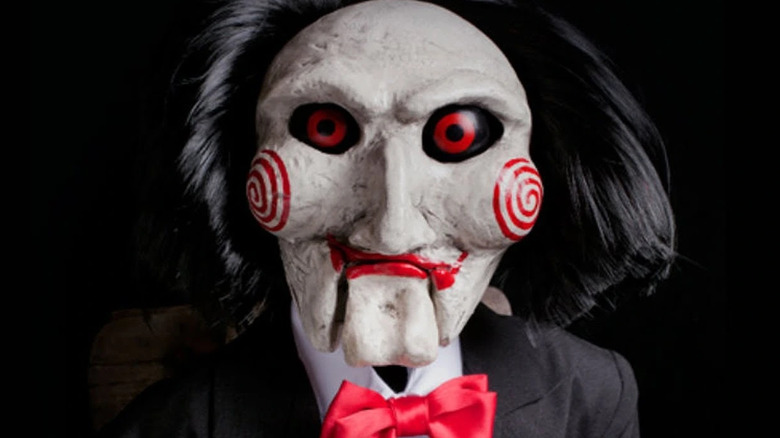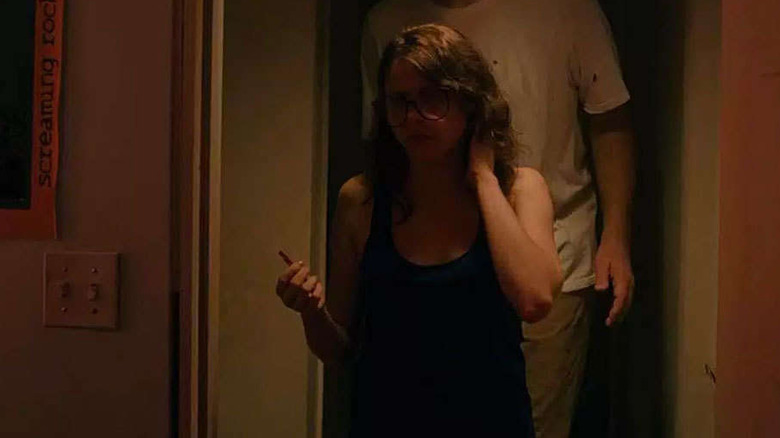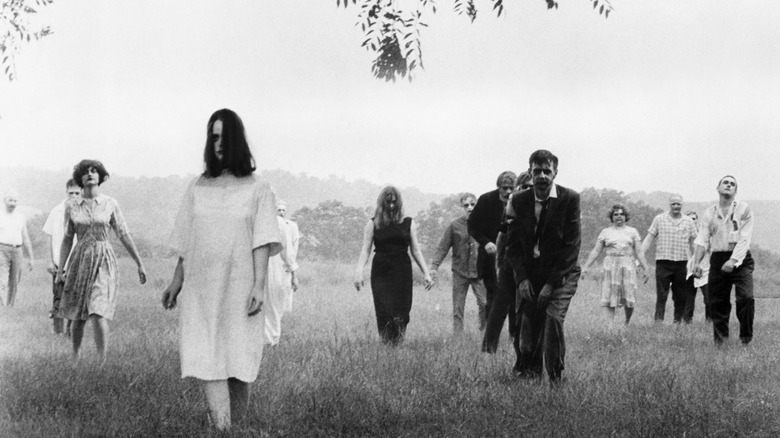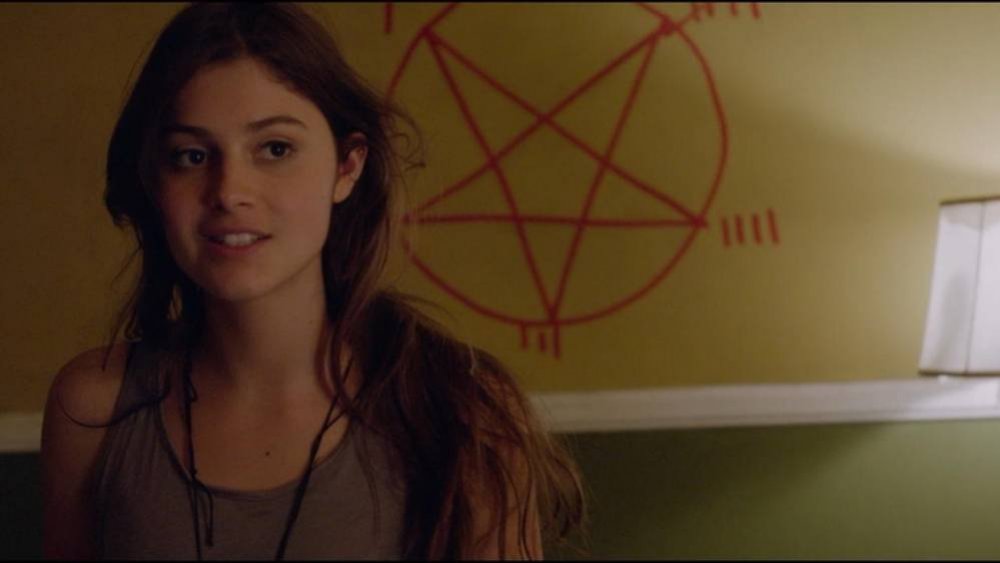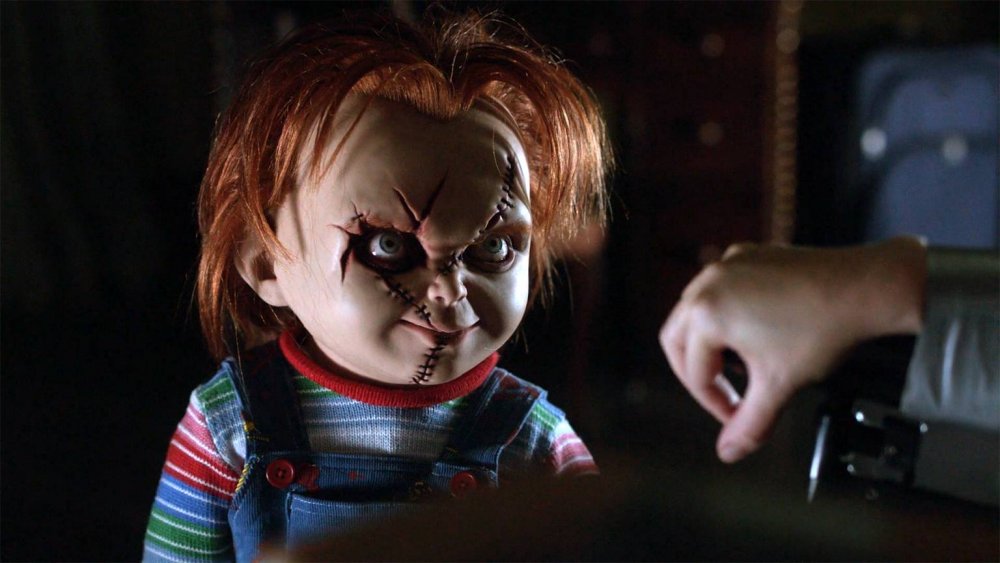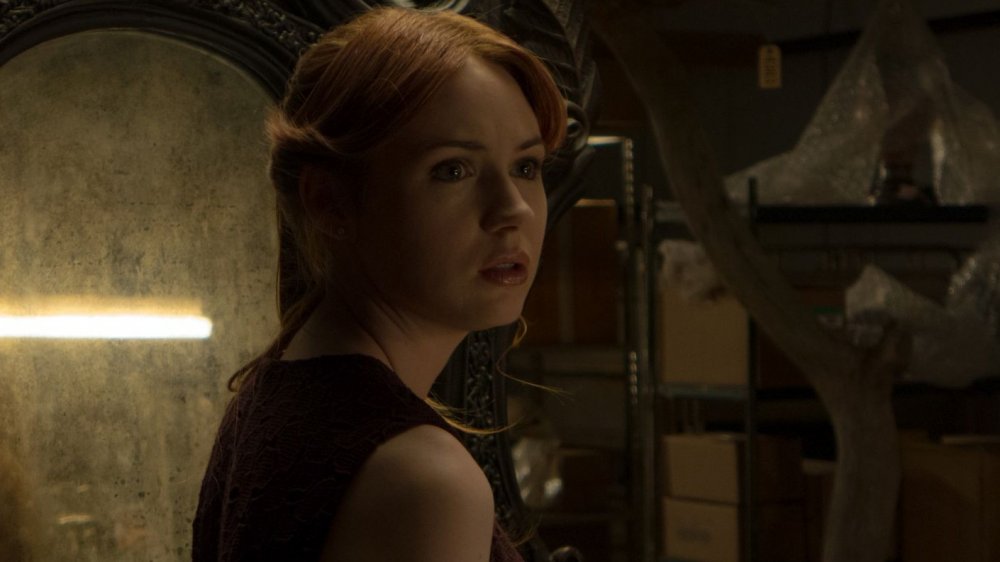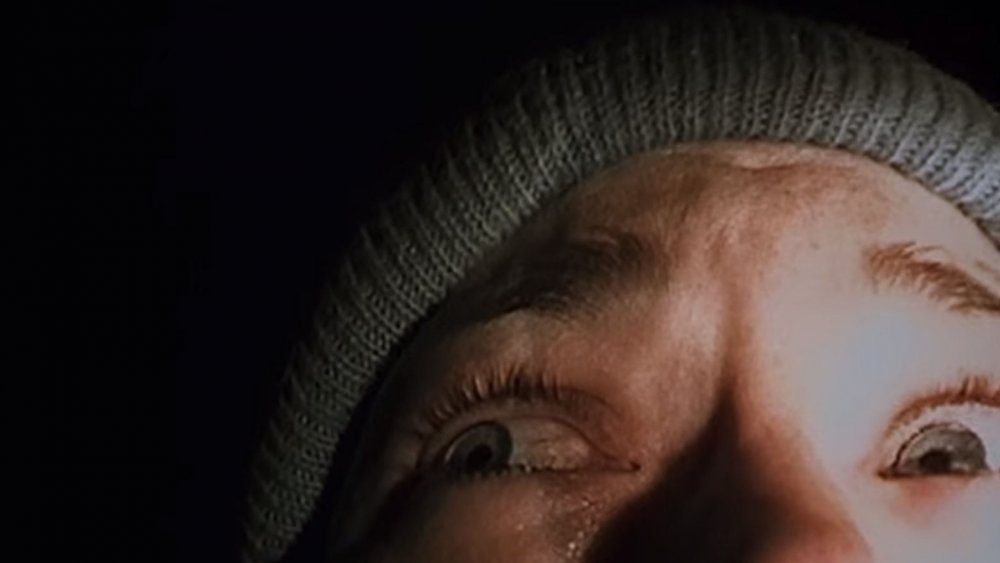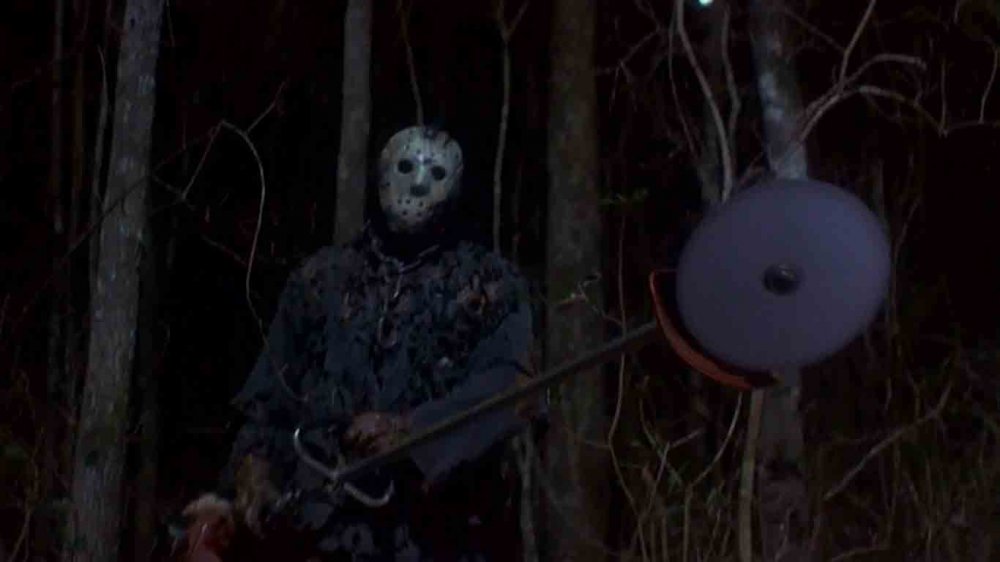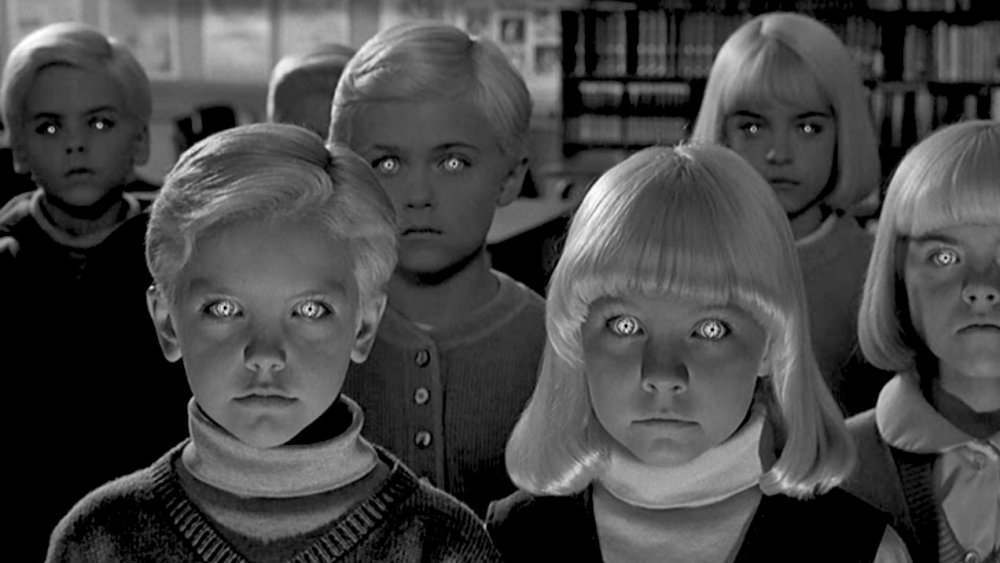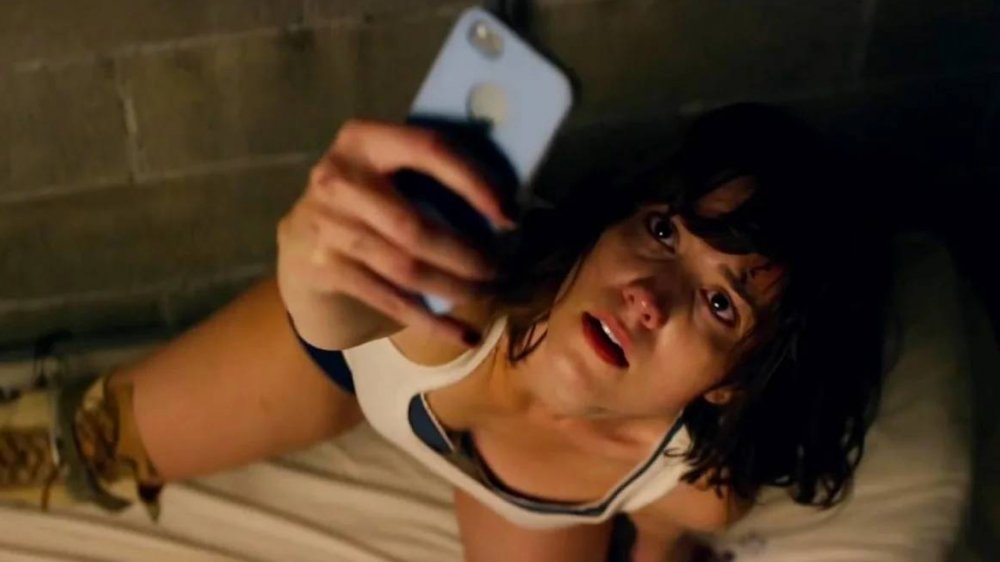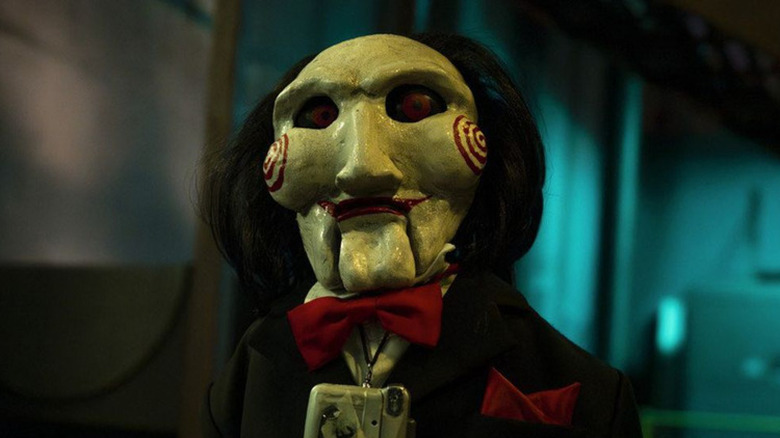Things From Horror Movies That Aren't Scary Anymore
What one finds scary differs dramatically from person to person. For some, seeing an ax-wielding murderer hunting down teens in the woods is the most terrifying thing ever conceived. Others prefer psychological horror that lingers in one's mind for hours after the credits have rolled. Some are really into vampires, werewolves, and other classic movie monsters. Despite this subjectivity, certain horror movie elements can be widely agreed upon as having worn thin. And no one, least of all horror fans, loves a tired cliche.
Moviegoing audiences have grown more and more savvy with time. Today's media-saturated age has accelerated this process — even teenagers are acquainted with tropes like final girls and abandoned mental hospitals. Things that were revolutionary and horrifying decades ago have become laughable to modern eyes. This is a death knell for a horror movie: You can't scare an audience that's yawning. These are the cliches, formulas, and tropes horror audiences just aren't scared by any longer.
Jump scares just make you jump
The jump scare's roots date back to the 1940s. You're likely familiar with the set-up. Everything appears normal — then, out of nowhere, something ominous enters the frame, typically accompanied by a music cue. But while it's called a "jump scare," its real name should be a "jump startle."
Seeing a demon enter a frame unexpectedly is a lot like turning a corner and almost bumping into someone you didn't expect to see: It doesn't actually scare you, it's just a surprise. You're slightly taken aback ... and then you go about your business. In film, most jump scares leave no lasting impression because they're not earned — they're just poking the right parts of your nervous system.
The worst version of this trope is the fake jump scare. This is when a scene builds up to a monster suddenly entering the picture, only for it to turn out to be ... a cat, a piece of trash, or something otherwise mundane. Though this might once have been a clever subversion of expectations, it's old hat today. Attention Hollywood: It's time to put down the jump scares, and commit to some real horror.
Zombies have been done to death
There are plenty of amazing zombie movies out there if you're itching for some good old-fashioned violence against the undead. However, something strange has happened to this genre: Zombie movies just aren't as scary as they used to be.
Zombies lost a good chunk of their bite in the 2000s with films like Shaun of the Dead and Zombieland, which deliberately take all the gravitas out of the walking dead. Zombies became downright funny, and were also portrayed as increasingly easy to take out. You don't need silver, garlic, or wooden stakes to dispatch a zombie, according to 2000s horror: As long as you're smart about how much noise you're making and you've got at least a couple ranged weapons, you could probably live indefinitely in a zombie apocalypse.
Really, zombie movies these days tend to be action flicks instead of outright horror. The characters amble around, taking out one zombie after the next, showing off how cool they are. Many of these movies are fantastic — they're just not scary. Night of the Living Dead truly terrified audiences when it came out, while movies like Little Monsters and Pride and Prejudice and Zombies want to make you laugh, cheer, and maybe even cry ... but probably not scream.
Satanists are silly
Films like Rosemary's Baby terrified the world with visions of avowed Satanists. These days, however, if you hear someone is a Satanist, you're likely to giggle. Most people's experiences with Satanists involve heavy metal bands and kids who want to seem edgy in high school. They may like the aesthetic of the pentagram, but no one really expects them to sacrifice goats — let alone people. Additionally, documentaries like Hail Satan? have revealed real-world Satanists to be more like trolls than anything else. Even the Church of Satan's website makes it clear that they're more interested in individual freedom than literal devil worship.
All of this means one thing for movies: Satanists just aren't that ominous anymore. No one's worried about Satanists in their neighborhood, kidnapping children. No one's scared that Satanists are going to snatch them off the street and sacrifice them to an obscure bureaucrat of Hell. There are a lot of scary things in the real world, but generally speaking, you can relax when it comes to followers of the devil. The worst thing the kid in the pentagram t-shirt might do is dump a soda on your car.
Haunted dolls are for kids
Chucky was far from the first evil doll in cinema, but he quickly became the most popular. 1988's Child's Play terrified audiences, and since that moment, haunted dolls have cropped up in plenty of horror movies. From Annabelle in The Conjuring to Billy the puppet in Saw, there's something unsettling about seeing a child's toy used for nefarious purposes. However, despite the surprisingly high number of films that incorporate an evil doll, you're more likely to chuckle from their presence than to scream in terror.
At the end of the day, it's just hard to be scared of something you could put in a closet. Sure, the dolls usually have magical capabilities that make them harder to defeat, but a lot of movies don't explore them all that thoroughly. This leads to scenes where dolls loom behind characters, clutching butcher knives ... that only end up highlighting how darn small the dolls are. Sure, it'd be a shock to see a Cabbage Patch Kid hopping towards you with a murderous gleam in her eye, but it's hard not to notice how easily anyone could outrun her. Moreover, the contrast of the haunted doll — so cute, and yet so bloodthirsty — can end up being accidentally comical. Take Chucky. At some point, you've added so many scars and blood-splatters that he just looks goofy. It's time to put the toys back in the toy box and move on.
The mirror scare is predictable
A character looks in a mirror, usually in a bathroom. The character then looks away from the mirror, or opens up the cabinet, momentarily obscuring their reflection. When the mirror reappears, something scary accompanies the expected reflection. Cue screams.
The problem with this trope is that it's been done to death. The moment you see a character looking in the mirror, you prepare yourself for the "shocking" reveal. As a result, suspense doesn't build, so when the monster shows up, you shrug.
Moreover, this particular scare just doesn't hold up to scrutiny much of the time. Think about it: A monster or demon only has a few seconds while the protagonist isn't looking at the mirror to sneak up behind them. Some creatures have powers that justify this, but a whole lot don't. Plus, why would a monster be content with just momentarily startling their prey? Wouldn't they realistically have used that time to grab the character's ankles or sink their teeth into a shoulder? The mirror scare assumes a level of theatricality from the monster that just doesn't make sense. This technique is simply overdone.
Found-footage doesn't work anymore
The Blair Witch Project revolutionized horror. Not only is it genuinely terrifying, it had a totally unique marketing campaign. Through the use of missing person leaflets and then-new online message boards, The Blair Witch Project managed to convince millions that the film was totally real and composed of actual footage. Even today, when everyone knows the truth, the found-footage nature of the film manages to impress.
However, this led to an overabundance of found-footage films, and the impact slowly dissipated over time. No matter how hard movies try to convince viewers that what they're seeing is totally real, audiences have become a whole lot savvier. There are more reliable sources on the internet now, and all it takes is a quick Google search to show that a film is not, in fact, based on a true story.
The other issue is that found-footage movies tend to be loaded with other cliches that don't really work anymore, like jump scares. That's not to say found-footage films can't work anymore. But filmmakers need to find a unique angle, much like The Blair Witch Project did all those years ago.
Tripping just makes you laugh
A character runs through the woods, trying to escape from the villain. Suddenly, they trip over something. Instead of getting back up and running away, they slowly crawl until the antagonist has a chance to catch up.
The purpose of having a character trip during a chase is simple: It increases the tension. Now, Jason Voorhees has a genuine shot at outpacing his prey. The problem, as is the case with so many horror movie tropes, is that it has become played out. Audiences probably aren't going to be more scared after seeing a person trip and fall — they're just more likely to roll their eyes and think, "Well, this person deserves to die now." They can't all be sustaining injuries bad enough to keep them on their hands and knees.
Furthermore, this trope raises an awkward question: If the places these characters are running through have so many tripping hazards, how come you never see the villain trip over something? Why do monsters have such good spatial awareness? It's understandable filmmakers would want to increase the tension in such pivotal scenes, but there has to be a better way to do so.
Creepy kids should be left alone
Creepy kids are an understandably popular horror trope. Children are supposed to exemplify innocence, so to see that purity tainted by, say, a demon is definitely disturbing. From The Omen to The Shining, kids can be effective tools of horror when used the right way. But this storytelling device has lost a whole lot of its power over the years.
The thing about creepy kids is that ... well, they're still kids. They have the power to be scary, but their presence can also be more of an annoyance than anything else. Watching their parents remain oblivious can quickly slip from scary to irritating, and the wrong child actor can take things into the realm of accidental comedy. You might shock the audience by giving the little one a chilling line ... but you might also make them laugh. Or worse, coo — there's just something a tiny bit adorable about a kid actor wielding a bloody cleaver. Look at them, doing such a good job in their big-kid movie role! You could just pinch their cheeks!
Seeing a kid take part in the mayhem used to be a novelty. These days, it's become commonplace. Creepy kids are no longer a symbol of lost innocence. They're a symbol of lost creativity.
Loss of phone service is to be expected
The fact that pretty much everyone carries around a cell phone has obviously presented a challenge to horror movies. After all, so many horror movies take place in remote locations — a character who can just call the cops to come save them isn't exactly in peril. Horror films had to adapt, which is why it has become obligatory for characters to lose cell service, then make that fact known to everyone around them. It's a quick, theoretically painless way to fill in a potential plot hole.
The first few horror movies to utilize this device were doing something new. After all, you're probably a little freaked out yourself when your cell phone dies, even if you're not being hunted by a demon. Now, it's simply become an obligatory sequence. We expect modern horror films to have a scene dedicated to getting cell phones out of the equation so that we can get to the mayhem.
These days, losing service doesn't instill an audience with fear. It's just going through the motions until the movie can get to the good stuff. Movies should consider doing something unique with phones instead — if dolls and mirrors can be scary, why not text messages?
Torture is sickening
In 2004, Saw gave audiences a brand new type of horror movie. Horror films have always been bloody, but this sub-genre is different. These movies seem to take genuine pleasure in torturing their characters as brutally as possible. It isn't enough for the villain to kill people — he has to flay them, chop them up, and otherwise turn them into meat. Grisly machines are often involved. It's gross, and that's entirely the point.
Torture has fallen out of favor in recent years, and that's probably for the best. For one thing, audiences aren't necessarily scared of it anymore. They may recoil and hide their eyes because no one wants to see a man drown in blended, rotting pig carcasses, but they're not truly scared. Disgust does not equal horror.
These movies had their moment in the sun, and audiences grew tired of it. It may be difficult to watch, but horror movies shouldn't always be endurance tests. People don't always want to watch something that may make them throw up. Gore is one thing, but torture for the sake of torture has become, somehow, boring.
